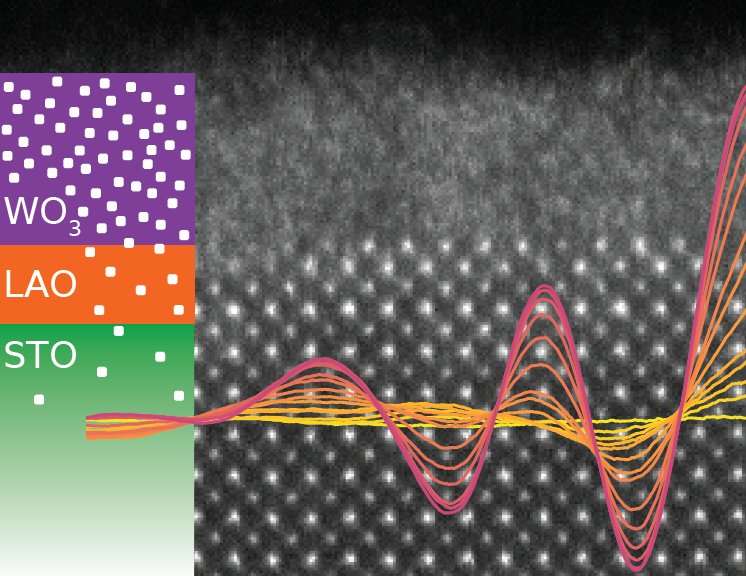New step towards future complex oxide electronics

Researchers from TU Delft, Cornell University and the University of Cagliari report an interesting method for turning a highly insulating material into a highly conducting system. The process involves combining three different metal oxides in a sharp interface. They have recently published their findings in ACS Applied Materials & Interfaces.
Lead author Giordano Mattoni, PhD-student at TU Delft, says, "Our findings are a strong proof of the rising importance of complex oxides, which could be used in the electronics of the future. A fundamental milestone in the use of these materials in electronics was reached in 2004, when the formation of a two-dimensional electron system (2DES) was discovered at the interface between the insulators LaAlO3 (LAO) and SrTiO3 (STO)."
Complex oxide materials offer many characteristics that cannot be achieved with current electronics based on silicon. Superconductivity, ferroelectricity and magnetism are just a few of the many interesting phenomena that are observed in complex oxides. While the road towards industrial use of these material is still long, the work of the TU Delft researchers is significant proof of the potential of oxide interfaces.
Interfaces between complex oxides constitute a unique playground for two-dimensional electron systems (2DES), where superconductivity and magnetism can arise from combinations of insulators. The formation of a two-dimensional electron system at the interface between the insulators STO and LAO is among the most intriguing effects in oxide electronics. The conductive layer that forms has a strongly two-dimensional character (it is a plane of electrons, about 10 nanometer in thickness), and presents a very high electron mobility and a strong magnetoresistance.
The origin of this 2DES is a long-standing question, and recent results indicate that the control of point defect formation is crucial to the realisation of high-quality electron systems. "A promising material to enhance the properties of the electron system at LAO/STO interfaces, is the metal oxide WO3," says Mattoni. "This material can host vacancies and interstitial atoms, which is why it is often utilized in electrochemical applications and electrochromic devices. In this work we demonstrated, for the first time, how WO3overlayers can effectively control the profile of defects, inducing a high mobility 2DES at WO3/LAO/STO heterostructures."
The experimental findings underscored WO3 as a very efficient dopant for oxide interfaces. Starting from the results described in their paper, the researchers believe that WO3 overlayers will be used to engineer novel conductive electron systems in other oxide materials. The work is thus an important step forward towards the rise of future complex oxide electronics.
More information: Giordano Mattoni et al, Insulator-to-Metal Transition at Oxide Interfaces Induced by WO3 Overlayers, ACS Applied Materials & Interfaces (2017). DOI: 10.1021/acsami.7b13202
Journal information: ACS Applied Materials and Interfaces
Provided by Delft University of Technology
















